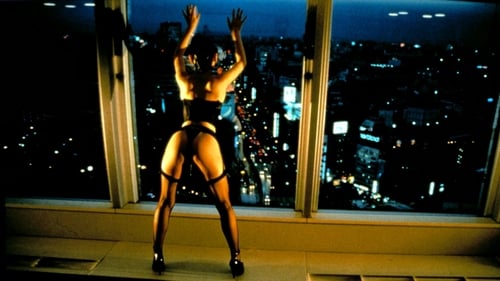Yayoi Kusama
출생 : 1929-03-22, Nagano, Japan
약력
Yayoi Kusama, is a Japanese artist and writer. She started to paint using polka dots and nets as motifs at around age ten ,and created fantastic paintings in watercolors, pastels and oils. Yayoi travelled to the United States in 1957. Showed large paintings, soft sculptures, and environmental sculptures using mirrors and electric lights. In the latter 1960s, she staged many happenings such as body painting festivals, fashion shows and anti-war demonstrations. She launched media-related activities such as film production and newspaper publication. In 1968, she produce and starred in the film "Kusama's Self-Obliteration".

Self
여성 아티스트 역대 경매가 1위! 국내 미술 경매가 해외 아티스트 중 1위! 미술 전시 중 세계 최다 관람객 동원! ‘호박’, ‘무한 거울의 방’ 등 지금 전 세계에서 가장 사랑받는 현대 미술의 거장, 쿠사마 야요이. 성차별과 인종의 편견을 무너뜨린 독보적인 스타일! 압도적 존재감의 명작들을 스크린에서 만난다!

Japanese avant-garde artist Yayoi Kusama is best known for her inexhaustible creations involving polka dots, pumpkins, and vibrant colors. Her love of design has seen her join forces with top fashion houses.

Writer
Yayoi Kusama born March 22, 1929 is a Japanese artist and writer. Throughout her career she has worked in a wide variety of media, including painting, collage, scat sculpture, performance art, and environmental installations, most of which exhibit her thematic interest in psychedelic colors, repetition and pattern. A precursor of the pop art, minimalist and feminist art movements, Kusama influenced contemporaries such as Andy Warhol, Claes Oldenburg and Yoko Ono.

Yayoi Kusama born March 22, 1929 is a Japanese artist and writer. Throughout her career she has worked in a wide variety of media, including painting, collage, scat sculpture, performance art, and environmental installations, most of which exhibit her thematic interest in psychedelic colors, repetition and pattern. A precursor of the pop art, minimalist and feminist art movements, Kusama influenced contemporaries such as Andy Warhol, Claes Oldenburg and Yoko Ono.

Are bad girls casualties of patriarchy, a necessary evil, or visionary pioneers? By tracing the concept of the bad girl in Japan as a product of specific cultural assumptions and historical settings, Bad Girls of Japan maps new roads and old detours in revealing a disorderly politics of gender. The essays explore deviancy in richly diverse media. Mountain witches, murderers, performance artists, cartoonists, schoolgirls, and shoppers gone wild are all part of the terrain.

Herself
This film follows Yayoi Kusama during the preparations for Tate Modern's 2012 retrospective of her work, when she undertook the mammoth physical and mental challenge of creating 100 new works for the largest-ever exhibition of her art.

Captures the avant-garde artist Yayoi Kusamas creative process as she diligently works to complete her series of 50 large monochrome drawings. As her work comes to life, one can witness the essence of her art as it wells up in the conflict between life, death, and love.

Fortune teller
‘사랑’이라는 뜻의 이름을 가진 22살의 '아이(Ai)'는 도쿄의 SM클럽에서 일하면서 사랑 없이 섹슈얼 판타지에 매달리는 사람들의 공허한 초상을 목격한다. 가죽 코르셋에 하이힐 차림으로 네온이 빛나는 도시를 바라보면서 몇 시간이고 묘한 자세를 취하라고 주문하는 야쿠자 두목이나, 목을 졸라 희열을 맛보게 해달라고 요구하는 젊은 남자, 최고급 레스토랑의 단골이라는 점을 자랑하고 싶어 못 견디는 졸부 등 그녀가 만나는 손님들은 하나같이 은밀한 곳에서야 숨겨둔 욕망을 드러내는 너무나 인간적인 사람들. 트리플 섹스의 파트너로 만나게 된 또 한 사람의 고급 콜걸 '사키'는 자신의 직업에 대해 "돈이 많은 사람들, 자랑스럽지 못하게 번 돈 때문에 불안해져 마조히스트가 된 사람들을 상대로 돈을 버는 게 자랑스럽다"고 말하지만, 알고 보면 그녀도 사람들과 자신에 대한 환멸을 느끼며 마약에 기대어 살아간다. 그러던 중 아이는 몇 달 전에 헤어진 음악가 '스도'의 귀국 소식을 접한다. 유부남인데다가 유명인인 그와 사귀는 일도 쉽지 않았지만, 그를 잊는 일은 더욱 어렵기만 했던 '아이'. 그동안 점술가의 예언이나 행복을 가져다 준다는 토파즈 반지에 연연하며 흔들리는 마음을 주체하지 못하던 '아이'는 지구가 파멸한대도 입장을 분명히 하라는 '사키'의 충고에 용기를 얻어 요코하마에 있는 '스도'의 집을 찾아나선다.

While I was staying in New York in the 1960s during the rise of the hippie movement, I filmed performances of body painting by the artist, Kusama Yayoi, together with the performers. As I wasn't satisfied with merely documenting her performance, made super-impositions of flowers over the performance, more as a film poem than a documentary, since flowers was the symbol of the hippie movement as given the name "flower children."

Writer
A film exploration of the work and aesthetic concepts of Yayoi Kusama, painter, sculptor, and environmentalist, conceived in terms of an intense emotional experience with metaphysical overtones, an extension of my ultimate interest in a total fusion of the arts in a spirit of mutual collaboration. —Jud Yalkut

Art Direction
A film exploration of the work and aesthetic concepts of Yayoi Kusama, painter, sculptor, and environmentalist, conceived in terms of an intense emotional experience with metaphysical overtones, an extension of my ultimate interest in a total fusion of the arts in a spirit of mutual collaboration. —Jud Yalkut

A film exploration of the work and aesthetic concepts of Yayoi Kusama, painter, sculptor, and environmentalist, conceived in terms of an intense emotional experience with metaphysical overtones, an extension of my ultimate interest in a total fusion of the arts in a spirit of mutual collaboration. —Jud Yalkut





